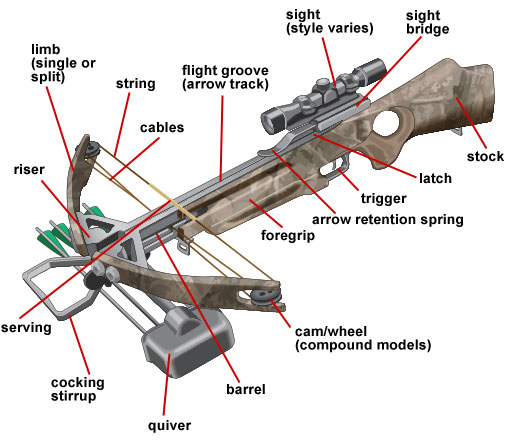

As you see, both have the same peak draw weight, but the blue one reaches its peak required effort much quicker, holds it there for longer, and has less let-off at the end. Here are two different draw-force curves for two different compound bows. The blue curve is an aggressive bow, while the green is friendlier to shoot. Draw-force curves for two fictional compound bows. To achieve a variable draw weight, compound bows use noncircular wheels, or cams, that change the force required of the archer as they complete the draw cycle. In short, working like a block and tackle enables a compound bow to multiply an archer’s input force, storing more potential energy in the flexed limbs than would be possible with a traditional bow of equivalent draw weight.īut this doesn’t explain how compounds achieve that let-off at the end of their draw cycle. Because that cable pulls on the the axis of both wheels, they are drawn together with more force than the archer applies to the string. As you pull back on the bowstring, both outer wheels rotate, multiplying the force applied to the cables on the inner wheels. The bowstring connects the two outside wheels. The result looks like a compound bow with cams on both ends, right?Įach cable attached to the inner wheels is directly connected to the center of the opposite wheel. Now, let’s double this setup, connecting the two ropes that pass around the larger radii as a single string and replacing the ropes that go around the smaller radii with cables. Drawing on the larger wheels multiplies the force applied by the smaller ones. When the archer pulls on the string, it rotates the wheels, causing the two to be drawn closer together. A compound bow looks a lot like a paired block and tackle. Because energy equals force times distance, moving something a shorter distance for the same energy means more force is applied. If you pull down on the large pulley, the inner pulley moves with equal energy but pulls its rope a shorter distance. Two pulleys are connected at the axle so that when one moves, the other moves with it. To get started, let’s look at how that block and tackle works. (Corey Hass)Ī compound bow works like a simple block and tackle, multiplying input energy over distance. With a simple block and tackle, a user applies force to the outer wheel, which moves over a longer distance than the inner wheel, multiplying the force of that inner wheel.
#Compound crossbow diagram full#
This means the archer is left holding a fraction of the bow’s peak weight at full draw, leaving her less strained as she prepares to release the arrow-allowing more time to aim and facilitating a more stable shot. The draw cycle of a compound bow is not linear: as you pull the string back, the effort required peaks part of the way along, and then lets off at the end. How do they do that? In short, with better efficiencies. Today’s fastest production compound bows propel arrows at up to 370 feet per second. How Compound Bows Shoot FasterĪrrows fired by a longbow typically travel at less than 200 feet per second. It’s important to note that the energy required to hold a drawn longbow directly corresponds to how far it’s drawn back. These have a linear relationship between the distance you pull them back and the effort you apply to do so. Let’s first look at the draw-force curve of a traditional longbow. The cumulative work (or potential energy) that you put into a bow is the area under the curve (shaded blue). The horizontal x-axis is the distance a bow is drawn, while the vertical y-axis is the weight required to draw the bow to the corresponding distance. That’s what you’re looking at in a draw-force curve. Force x Distanceīack in high school, you learned that work (energy) is a function of force times distance. That’s remarkable-the modern automobile, for instance, is only 25 to 35 percent efficient at turning combustion into motive force. Jeff Ozanne, a bow designer for Mathews Archery, tells us his bows are 87 to 89 percent efficient at transferring the archer’s input energy to the arrow. The more energy applied to the arrow, the faster it will go, and the faster it goes, the flatter its arc.

The goal of bow design is to minimize these losses. When you release the bowstring, the limbs spring back to their neutral state, exchanging their potential energy for kinetic energy that’s applied to the arrow.Īs with all mechanical systems, there are losses: the amount of energy exerted on the arrow is less than the amount of energy the archer applies to the bow. As you draw the bow back, the energy you exert is stored in the bent limbs. The goal of any type of bow is to take the force an archer puts into it and transfer that work-or energy-to the arrow. Now you can point your arrow at your target and actually hit it, thanks to the technology behind compound bows. Firing a bow is no longer a case of pointing it into the sky and lobbing an arrow into the distance.


 0 kommentar(er)
0 kommentar(er)
